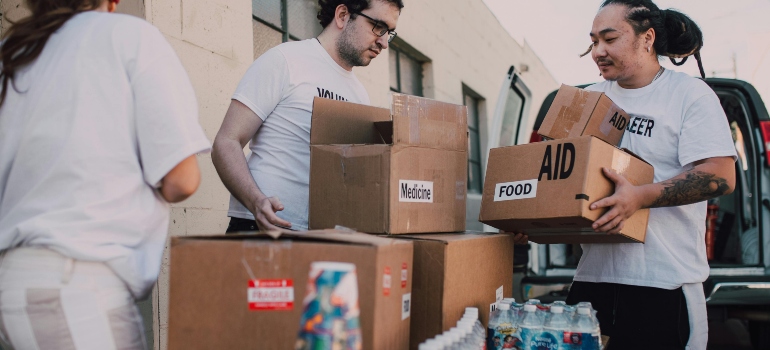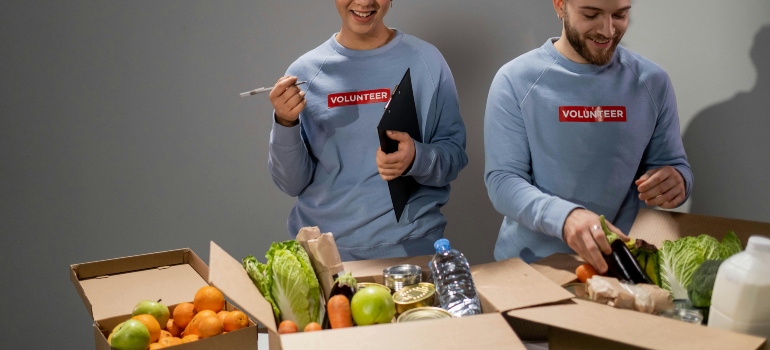What To Do With Non-Perishable Food When Moving
The moving presents several challenges, especially when determining what to do with non-perishable food. Managing these items well is crucial to minimize waste and maximize the amount of food you have. This blog post provides practical solutions for dealing with non-perishable food during a move. We’ll explore various strategies to help you make the most of your non-perishable food items, ensuring you minimize waste and simplify your move. For those in Seattle, the best movers Seattle has can provide additional tips and assistance for a smooth transition.
Assess Your Inventory
Start by taking stock of your pantry. Enumerate all of your non-perishable possessions. Organizing products according to their kind, such as spices, canned foods, and dry goods, enables you to more effectively discover and manage excess inventory. Next, check the expiration dates on each item. With this in mind, sort them based on these dates to determine which ones need to be used first and which can be stored long-term. Similarly, group items that are close to their expiration dates together so you remember to use them up. Besides, this method ensures you prioritize usage and avoid waste. In essence, taking the time to thoroughly assess your inventory can significantly streamline the rest of your moving process.
What To Do With Non-Perishable Food When Moving: Donate To Local Food Banks
Make it a priority to determine if the neighborhood food banks, shelters, and community centers accept non-perishable food contributions. Not to mention, you may have a big influence by contributing to Move for Hunger organization
Moreover, the top cross country movers in Seattle support this initiative, making it easier to contribute. Next, focus on preparing your donations. Follow guidelines for organizing and packaging food items. Of course, donations should only be in good condition and within their expiration dates. Another key point is ensuring the packaging is intact and clearly labeled. With this in mind, your donations will be more useful to those in need.

Use What You Can
First, focus on meal planning to use up as much non-perishable food as possible before the move. Create meal plans that incorporate these items. Besides, share recipes and ideas for combining pantry staples in creative ways. As an illustration, you might turn canned beans, pasta, and spices into a hearty stew. Next, consider batch cooking and freezing meals. In contrast to cooking daily, prepare large quantities and freeze them for easy consumption during the moving process. Another key point is to make sure to store and label frozen meals properly. Use airtight containers and clear labels with dates and contents. Considering this, you’ll have convenient meals ready without wasting any food. Here are some tips for effectively using and storing non-perishable food before the move:
- Create versatile meal plans: Focus on recipes that use multiple pantry items.
- Share creative recipes: Exchange ideas with friends and family for using pantry staples.
- Cook in bulk and freeze: Make a lot and portion it out for quick meals.
- Use airtight containers: Store food in containers to keep it fresh and prevent freezer burn.
- Label clearly: Mark containers with contents and dates to keep track of what you have.
Share with Friends and Neighbors
Initially, consider community sharing as a way to manage your non-perishable food. Offer food to community members by letting friends, neighbors, or coworkers know what you have available. Additionally, organizing food swaps and giveaways can be a fun and effective way to distribute surplus items. Then, think about creating care packages. Furthermore, make thoughtful packages for friends or those in need. Instead of throwing away food, this approach ensures it goes to good use. Moreover, one of the top shipping companies in Seattle can assist in delivering these packages if recipients are far away. Thus, sharing food helps build community and reduce waste.

Transporting Non-Perishable Food
To begin with, pack non-perishable food securely to prevent damage during the move. Use sturdy boxes to avoid any breakage and ensure the safety of your items. In addition, proper labeling and organization help in identifying the contents quickly, making unpacking more manageable. Furthermore, pack similar items together, such as canned goods with canned goods and dry items with dry items, to keep everything organized and balanced within the boxes. Then, check with moving companies regarding their policies on transporting food items. For instance, some movers in Edmonds WA have specific guidelines about food transport that you must follow. Additionally, ask if there are any restrictions on the types or quantities of food you can move. As a result, understanding these policies can prevent any last-minute surprises and ensure compliance with company rules. Ultimately, careful packing and checking policies ensure your food items reach their destination safely without any hassle.
Setting Up Your New Pantry
Initially, focus on organizing your pantry efficiently in your new home. Start by categorizing food items, such as placing canned goods together, dry items in another section, and spices in a designated spot. Moreover, use clear containers and labels to keep everything easily accessible and manageable. Next, restock your pantry wisely. Assess what essentials you need and make a list before shopping. Additionally, avoid over-purchasing to prevent clutter and waste. Furthermore, consider what to do with non-perishable food when moving to ensure you only keep what is necessary and usable. In conclusion, maintaining a well-organized space helps you manage your pantry effectively and makes meal preparation easier.

Effective Strategies: What to Do With Non-Perishable Food When Moving
Managing non-perishable food wisely during a move offers numerous benefits. It reduces waste, saves money, and ensures you make the best use of your food supplies. Additionally, these practical tips help you stay organized and efficient. Not only does sharing food foster a communal spirit, it also benefits the less fortunate. You can make relocating easier and more sustainable by employing these techniques. Meal planning, food donation, and safe packing techniques may make things a lot easier. Ultimately, knowing how to handle non-perishable food during a move not only makes things easier but also encourages responsible consumption.
Why Choose Us
History
Hansen Bros. Moving & Storage is locally owned and operated by the same family for four generations, since 1890. We have a well-established reputation for service quality and reliability with a high percentage of repeat household and commercial clients.
Professionalism
We’re a certified ProMover by the American Moving and Storage Association with A+ rating with the Better Business Bureau, voted “Best in Western Washington” in 2009 and from 2011 to 2016 by KING5. Our company is fully licensed and insured and member of WMC and AMSA.
Value
Hansen Bros. Moving & Storage provide free, no-obligation in-home estimate and competitive rates, including low minimum rates for shipments moving under 300 miles. We’ve set a refund policy for unused packing materials and three Puget Sound locations to help clients save on travel fee costs.



